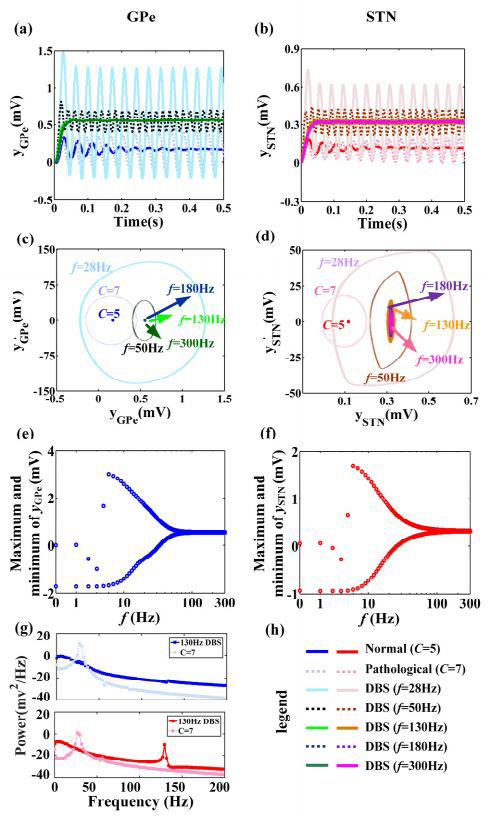
A mathematical modeling for description of oscillation suppression by deep brain stimulation (DBS) is explored in this work. High frequency DBS introduced to the basal ganglia network can suppress pathological neural oscillations that occur in the Parkinsonian state. However, selecting appropriate stimulation parameters remains a challenging issue due to the limited understanding of the underlying mechanisms of the Parkinsonian state and its control. In this work, we use describing function analysis to provide an intuitive way to select the optimal stimulation parameters based on a biologically plausible computational model of the Parkinsonian neural network. By the stability analysis using describing function method, effective DBS parameter regions for inhibiting the pathological oscillations can be predicted. Additionally, it is also found that a novel sinusoidal-shape DBS may become an alternative stimulation pattern and expends less energy, but with a different mechanism. This work provides new insight into the possible mechanisms underlying DBS and a prediction of optimal DBS parameter settings, and even suggests how to select novel DBS wave patterns for the treatment of movement disorders, such as Parkinson’s disease.

